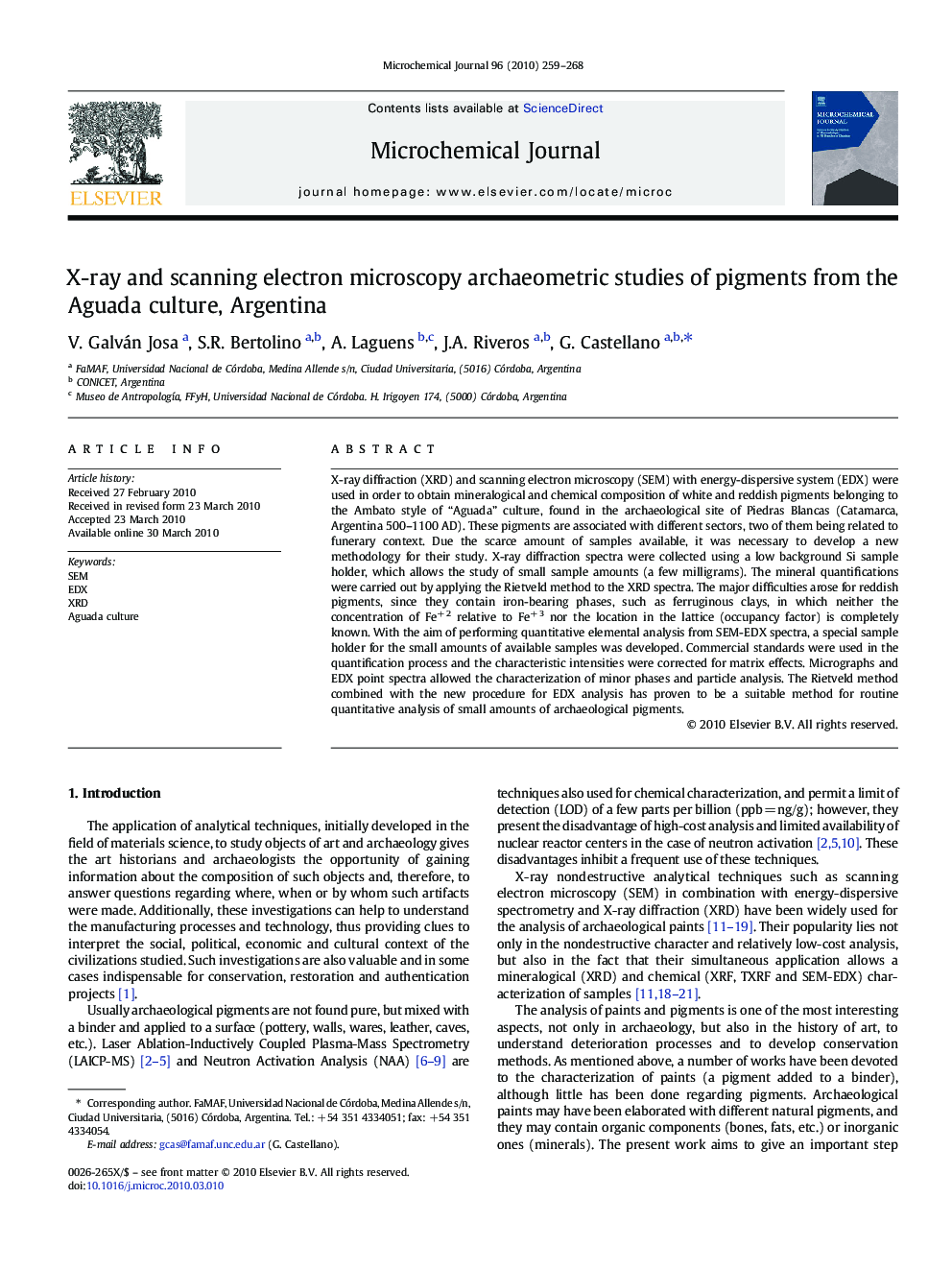| Article ID | Journal | Published Year | Pages | File Type |
|---|---|---|---|---|
| 1227922 | Microchemical Journal | 2010 | 10 Pages |
Abstract
X-ray diffraction (XRD) and scanning electron microscopy (SEM) with energy-dispersive system (EDX) were used in order to obtain mineralogical and chemical composition of white and reddish pigments belonging to the Ambato style of “Aguada” culture, found in the archaeological site of Piedras Blancas (Catamarca, Argentina 500-1100 AD). These pigments are associated with different sectors, two of them being related to funerary context. Due the scarce amount of samples available, it was necessary to develop a new methodology for their study. X-ray diffraction spectra were collected using a low background Si sample holder, which allows the study of small sample amounts (a few milligrams). The mineral quantifications were carried out by applying the Rietveld method to the XRD spectra. The major difficulties arose for reddish pigments, since they contain iron-bearing phases, such as ferruginous clays, in which neither the concentration of Fe+Â 2 relative to Fe+Â 3 nor the location in the lattice (occupancy factor) is completely known. With the aim of performing quantitative elemental analysis from SEM-EDX spectra, a special sample holder for the small amounts of available samples was developed. Commercial standards were used in the quantification process and the characteristic intensities were corrected for matrix effects. Micrographs and EDX point spectra allowed the characterization of minor phases and particle analysis. The Rietveld method combined with the new procedure for EDX analysis has proven to be a suitable method for routine quantitative analysis of small amounts of archaeological pigments.
Related Topics
Physical Sciences and Engineering
Chemistry
Analytical Chemistry
Authors
V. Galván Josa, S.R. Bertolino, A. Laguens, J.A. Riveros, G. Castellano,
